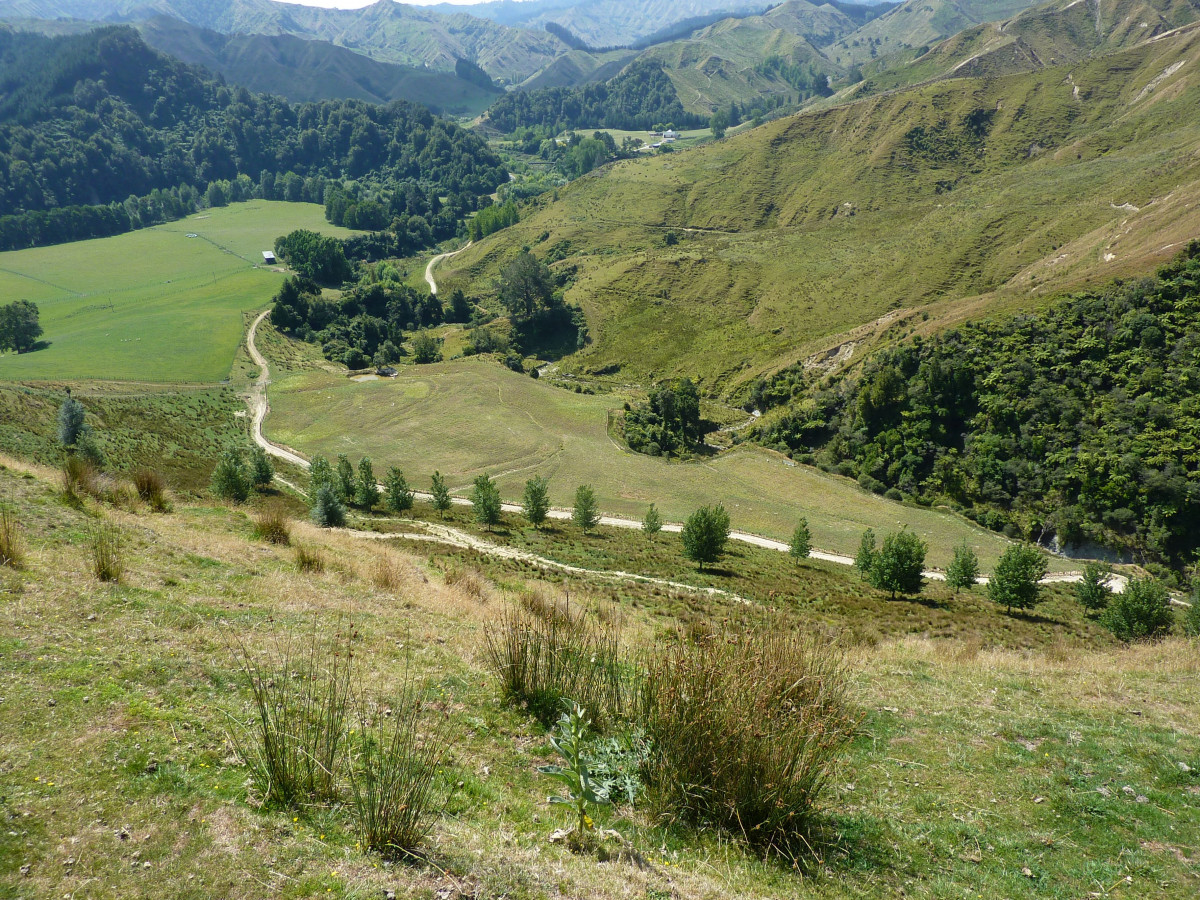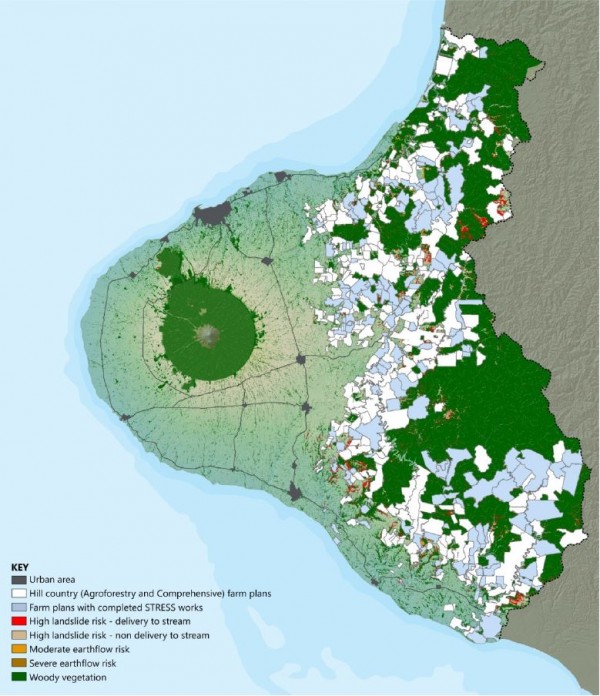Find out about Hill Country farm plans and the funding that's available here.
Hill Country - Farm Plans & Funding
Not sure what the upcoming government regulations mean for you and your hill country farm?
If you already have a Council farm plan then you're on the right track. If you don't, work with us to get your farm ready and leverage the government funding before it expires.

The Council has funding available to support hill country farmers with erosion control, pole planting and stock exclusion fencing. In the past five years, farmers have planted over 20,000 poplar poles, established 203 hectares of forestry and erected 116.8 km of fencing to retire 3,333 hectares of marginal land.
Contact us
Call Taranaki Regional Council on 0800 736 222 and ask for a Land Management Officer or email us at hillcountry@trc.govt.nz
Alternatively, fill out our contact form here.(external link)
Farm Plans
Comprehensive Farm Plans to look at all aspects of operations across an entire farm, including land and stock management. Typically developed for hill country farmers, comprehensive plans tackle issues such as slope stabilisation, gully erosion control, shelter, pasture improvement, wetland conservation, and the impacts on stock numbers and farm income. The idea is to match land use to the potential of the land, minimising the impact of erosion and maximising productivity
Our Land Management Officers evaluate a farm’s different land types and work with the farmer’s long-term goals to recommend appropriate land use and soil conservation actions. Plans include advice on planting, fencing, track layout and more. They can also recommend diversification or land use changes like planting forestry, scrub reversion and bush retirement.
Comprehensive Farm Plan [PDF, 371 KB]
Agroforestry plans are developed for farmers interested in establishing exotic or native plantation forestry on their property.
Forestry recommendations are based on land suitability for both planting and harvest. Our plans include a forestry proposal and an estimate of costs. They also include technical advice on selecting appropriate species, on planting and on regimes to optimise timber yield.
Agroforestry Plans can specify planting native forestry, particularly for areas of land considered too unstable for commercial forestry.
Where a farmer has concerns about a certain area of their property, we develop a Conservation Plan. These plans tackle specific issues such as stabilising a particular steep hillside, or a sand blow near the coast, or protecting a windswept paddock on the ring plain.
Conservation plans can also recommend farm improvements such as stabilising an eroding streambank , restoring a degraded wetland, or establishing a more efficient stock water supply.
These plans generally include an objective, a design solution, an estimate of costs and time frames and implementation advice such as ‘how to’ support.
Conservation Plans [PDF, 478 KB]
South Taranaki and Regional Erosion Support Scheme (STRESS) [PDF, 537 KB]
Control of earthflow and slump erosion [PDF, 483 KB]
Erosion Support Funding (STRESS)
Studies show that compared to pasture, 90% less erosion occurs under bush/forestry plantation, 80% less under scrub cover and up to 70% less where soil conservation trees are planted.
Soil conservation measures can take six to eight years to establish before they can provide adequate protection against erosion and reduce the sediment generated and delivered to waterways. Extreme storm events resulting in flooding and slips are likely to occur somewhere in Taranaki about once every five to six years. This highlights the need for landowners to take preventative measures to minimise the effects of soil loss.

STRESS funding has enabled implementation of farm plan recommendations in large areas of the eastern hill country (see map). In the past five years, farmers have planted over 20,000 poplar poles, established 203 hectares of forestry and erected 116.8 km of fencing to retire 3,333 hectares of marginal land.
Hill country farmers can apply for STRESS funding to undertake soil conservation projects that meet project and funding criteria.
To be eligible, farmers need to have a Council farm plan in place on their property. Once the agreed plan is developed, the farmer is eligible to apply for STRESS assistance to implement works that qualify.
South Taranaki and Regional Erosion Support Scheme (STRESS) [PDF, 537 KB]